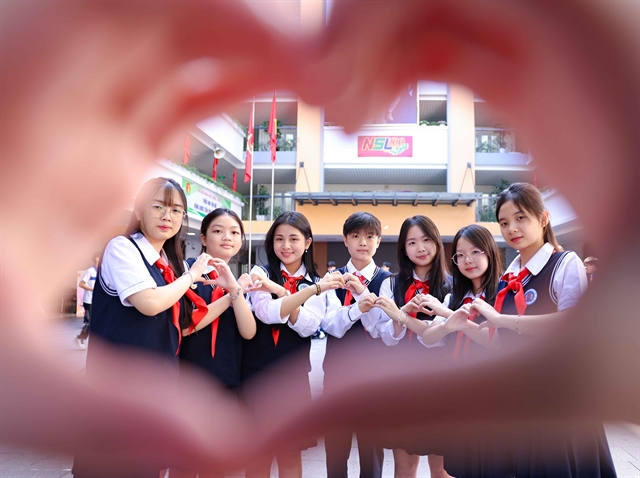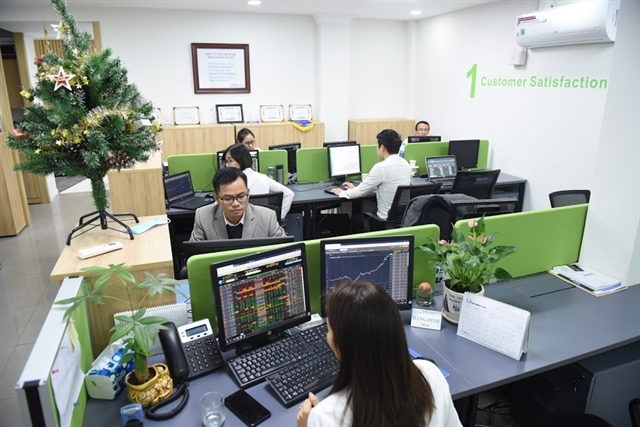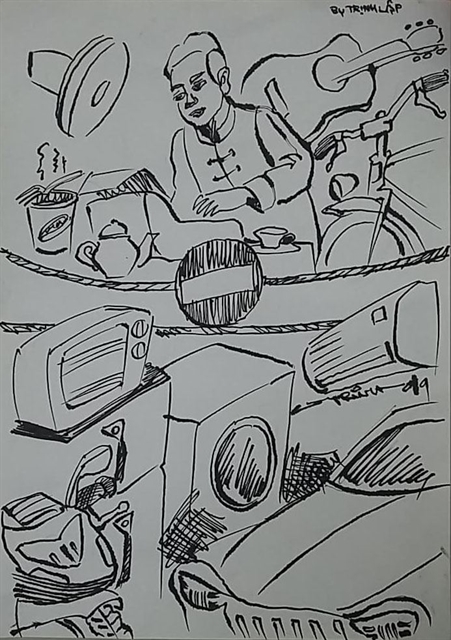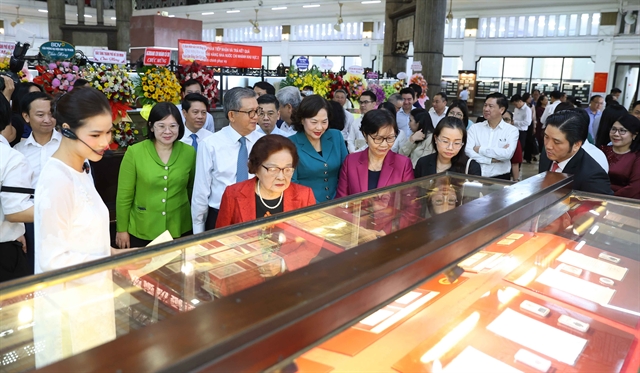 Talk Around Town
Talk Around Town

With increasing stress, Japanese-style minimalism has become popular among Vietnamese youth. Many social groups dedicated to the lifestyle have been set up with thousands of members nationwide.

|
| Illustration by Trịnh Lập |
By Phương Hà
After getting married recently, a young couple in the southern province of Kiên Giang led a life of Japanese-style minimalism, refusing all furniture presented by their parents and friends.
“We don’t use a wardrobe, TV set, cupboard, unnecessary kitchen kits or furniture in the living room,” the wife Nguyễn Thị Hân says.
They spent VNĐ150 million (US$6,500) on adapting their house to minimalism.
The husband Võ Hoàng Bắc made a bed-plank, several wooden shelves, a table and wooden toys for his nine-month-old boy by himself.
One of the two bedrooms in their 100sq.m house has been dismantled to make the living room more spacious and airy.
Hân, who is a full-time mother, has three sets of pyjamas, three shirts and two pairs of jeans for going out while her husband, working for a rice exporting company, has even fewer – only two sets of clothes to go to work. Whenever attending a special event, they will hire outfits.
Their young son might also have fewer clothes than others.
The mother uses a single induction stove, mostly for boiled or fried dishes while others could be steamed in the cooker with rice to preserve their original flavours.
They don’t use any kind of chemicals but soaps with natural ingredients for bathing and washing. Plastic bags are also rarely used by the couple.
“I come back home at noon each day to cook meals while my wife spends all of her time looking after our son. After giving birth, we have become more aware of leading a simple life because we expect my son to live in an environment of little possessions but full of happiness,” Bắc says.
After two years of minimalism, the couple does not pay much concern about financial issues and feels satisfied with their simple life.
“As long as we live more slowly and understand the life that we want to live in, we will be naturally aware of what we have to do,” they reckon.
Minimalism has been wide-spread in Japan since 2011, particularly after a 9.0-magnitude quake and tsunami which claimed nearly 20,000 lives and led to many re-evaluating their possessions.
It is estimated that around 30 to 50 per cent of injuries and deaths during earthquakes are caused by falling objects in Japan. By living in an apartment with less furniture, the owner will be less concerned about losses of property and spend less time cleaning and shopping; in other words, less for more happiness.
In modern life with increasing stress and concerns, minimalism has also become popular among Vietnamese youth. Many social groups dedicated to the lifestyle have been set up with thousands of members nationwide, like Vietminimalists Group with over 8,000 members or Minimalism Lifestyle with over 31,000 members.
Minimalism might be less for more to many people but to some, it does not always bring convenience. Some minimalists have even reverted to their former lifestyle after leading a minimal life for a while.
“It made life easier at first,” says Nguyễn Văn Lượng from Cầu Giấy District. “Our house became more spacious. My wife and I have just several clothes so it does not take us much time to choose what to wear for the day.”
After Lượng and his wife liquidated their household items like the sofa, water heater, microwave and washing machine with the wish to simplify their life, gradually more and more inconveniences occurred for the couple.
“We had to use a gas stove to heat the food but we needed to pay attention in order to prevent the food from being burned, which we wouldn’t have to do with a microwave. Instead, we could have used that time to do other things like making a cup of tea,” he says.
“The kitchenware was also minimised, which discouraged my wife from cooking. That’s why we had to spend more money on eating out.
“Adding to that, people thought we were wearing unwashed clothes by repeatedly wearing the same clothes. Our washing machine was sold so we had to wash our clothes manually at the weekend instead of hanging out with friends. We also found it uncomfortable seeing our guests sit on the floor instead of on a sofa.”
After all of these inconveniences, the couple started to question the value of pursuing minimalism.
“Much of our time can be saved for relaxation if the work is done by machines. Recently, we decided to revert to our former lifestyle and re-purchased the household items we had sold,” Lượng says.
According to Chi Nguyễn, the author of A Book about Minimalism and also a minimalist since 2015, many have a misunderstanding that minimalism means eliminating unnecessary household items instead of understanding its core meaning. The lifestyle is demonstrated not only in material factors but also in immaterial aspects like ways of thinking, relationships or the use of social networks.
“Everyone has their own definition depending on their views and life. To me, minimalism is an option for life, eliminating both unnecessary material and spiritual stuff to make room for new positive things,” Chi says.
“Every goal needs determination and actions. To people who have quit minimalism, they should have experienced different aspects of the lifestyle. Discarding unnecessary material things is just a small segment of minimalism.
“To me, as long as I have led this lifestyle, I never want to return to the former lifestyle which was too tiring and complicated with too many unnecessary relationships and hobbies,” she adds.
The writer also reckons that everyone does not need to follow the trend.
“Minimalism is only dedicated to people with the need to get rid of abundances in life to welcome more wonderful things. People who already feel happy with their life can totally choose their own way of living,” she said. VNS



.jpg)
